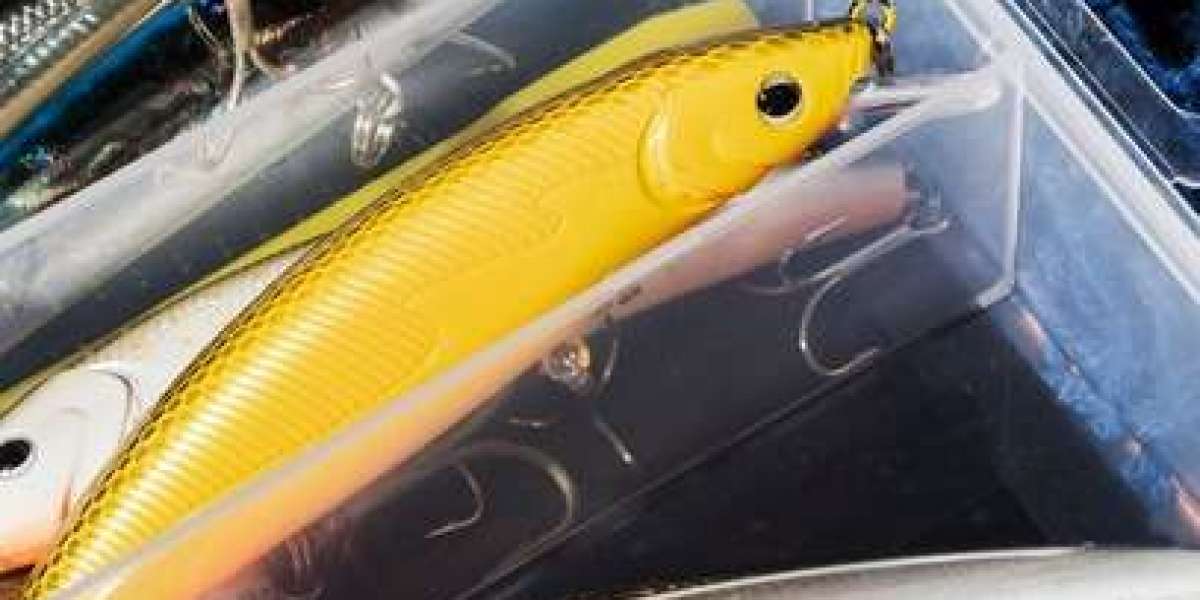Choosing the right fishing lure can be an overwhelming task for beginners. With so many types of lures available by fishing lure manufacturer, each designed for different species, water conditions, and fishing styles, it’s easy to feel lost. The good news is that selecting the best lure doesn't have to be complicated if you understand the basics. In this guide, we’ll break down the key factors to consider when choosing the best fishing lure for your catch, making the process simpler and more effective.
1. Understand the Types of Lures
Fishing lures come in various types, each designed to mimic different prey and appeal to specific fish species. Here are the most common lure types and their purposes:
· Crankbaits: These lures are designed to imitate small fish or other aquatic creatures. Crankbaits typically have a lip or bill that helps them dive and wobble through the water, simulating the movement of baitfish. They are excellent for covering large areas of water quickly and are effective for bass and pike fishing.
· Spinnerbaits: Spinnerbaits have one or more blades that spin rapidly as they are retrieved, creating vibrations and flashes of light that attract predatory fish. These lures are versatile and work well in murky water, targeting species like bass and northern pike.
· Soft Plastics: Soft plastic lures, such as worms, grubs, and minnows, are highly popular for their lifelike texture and movement. These lures can be rigged in multiple ways and are great for finesse fishing, targeting species like bass, walleye, and trout.
· Jigs: Jigs are weighted lures with hooks that often have a soft plastic or feathered body. They are best used for vertical jigging or bouncing along the bottom of the water. Jigs are highly effective for targeting species like bass, walleye, and perch.
· Topwater Lures: These lures float on the surface and are designed to mimic the movements of insects, frogs, or small fish. Topwater lures create a splashy, noisy action that can trigger aggressive strikes from fish like bass and musky.
2. Match the Lure to the Fish Species
Different fish species are attracted to different types of prey, so it’s essential to choose a lure that mimics the food your target species prefers. For example, bass are predatory fish that respond well to crankbaits and spinnerbaits that imitate baitfish, while trout are more likely to strike soft plastics or flies that resemble insects.
If you’re fishing for pike or musky, larger lures with flashy colors are ideal, as these fish are aggressive and attracted to movement and vibration. On the other hand, panfish such as crappie and bluegill are better suited to smaller lures like jigs or soft plastics that mimic tiny minnows or worms.
3. Consider Water Conditions
Water clarity, depth, and temperature all play important roles in lure selection. In clear water, fish rely more on sight to find food, so natural-looking lures with realistic colors and details work best. In contrast, murky or stained water requires lures that create vibrations or noise, as fish rely more on their senses of hearing and touch in these conditions. Spinnerbaits, crankbaits, and topwater lures can be particularly effective in low-visibility waters.
Depth is another key factor. Some lures, like crankbaits, are designed to dive deep, while others, like jigs, are effective near the bottom. If you’re fishing in shallow water, topwater lures or soft plastics might be your best option.
Water temperature also affects fish behavior. In warmer waters, fish are more active and will chase fast-moving lures, while in colder temperatures, they tend to be sluggish and may respond better to slower, more subtle presentations like jigs or soft plastics.
4. Adapt to the Weather
Weather conditions can greatly influence which lure will be most effective. On bright, sunny days, fish are more likely to retreat to deeper, cooler waters, so lures that can dive or reach the bottom, such as crankbaits or jigs, are ideal. On overcast days, fish may be more active near the surface, making spinnerbaits and topwater lures a good choice.
Windy conditions can also affect lure choice. In choppy waters, fish are less likely to see subtle movements, so using a lure that creates vibrations or flashes, like a spinnerbait, will help catch their attention.
5. Experiment with Color
The color of your lure can be a critical factor in enticing a fish to strike. In clear water, natural colors like silver, brown, or green that mimic the appearance of real baitfish are most effective. In murky or stained water, bright colors such as chartreuse, orange, or red can help fish locate your lure.
A general rule is to match the color of your lure to the color of the water or the type of prey in that environment. However, it’s always a good idea to carry a variety of colors and experiment with them to see what works best.
Conclusion
Choosing the right fishing lure for your catch involves understanding the different types of lures, matching them to the target species, and adapting to water conditions and weather. By considering these factors and experimenting with your choices, you’ll increase your chances of a successful catch, whether you’re a beginner or a seasoned angler. Start by learning the basics, and soon you’ll develop your preferences based on experience and the specific conditions you fish in. Happy fishing!








